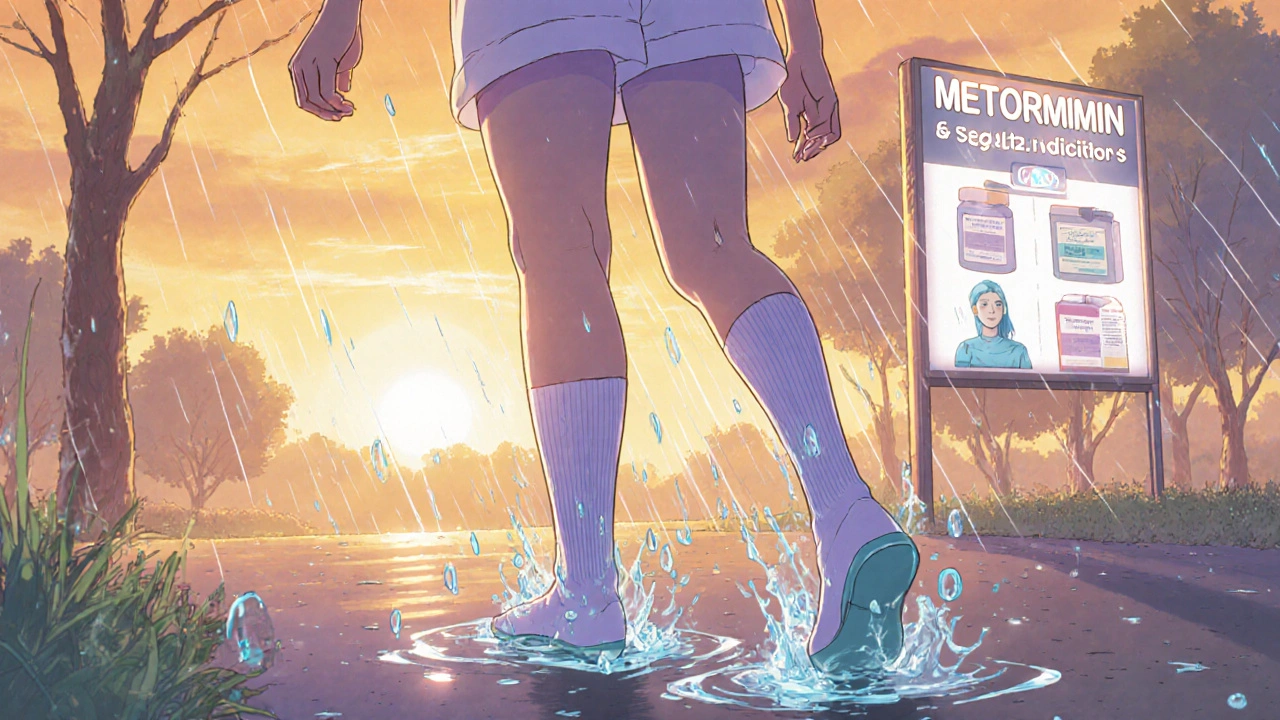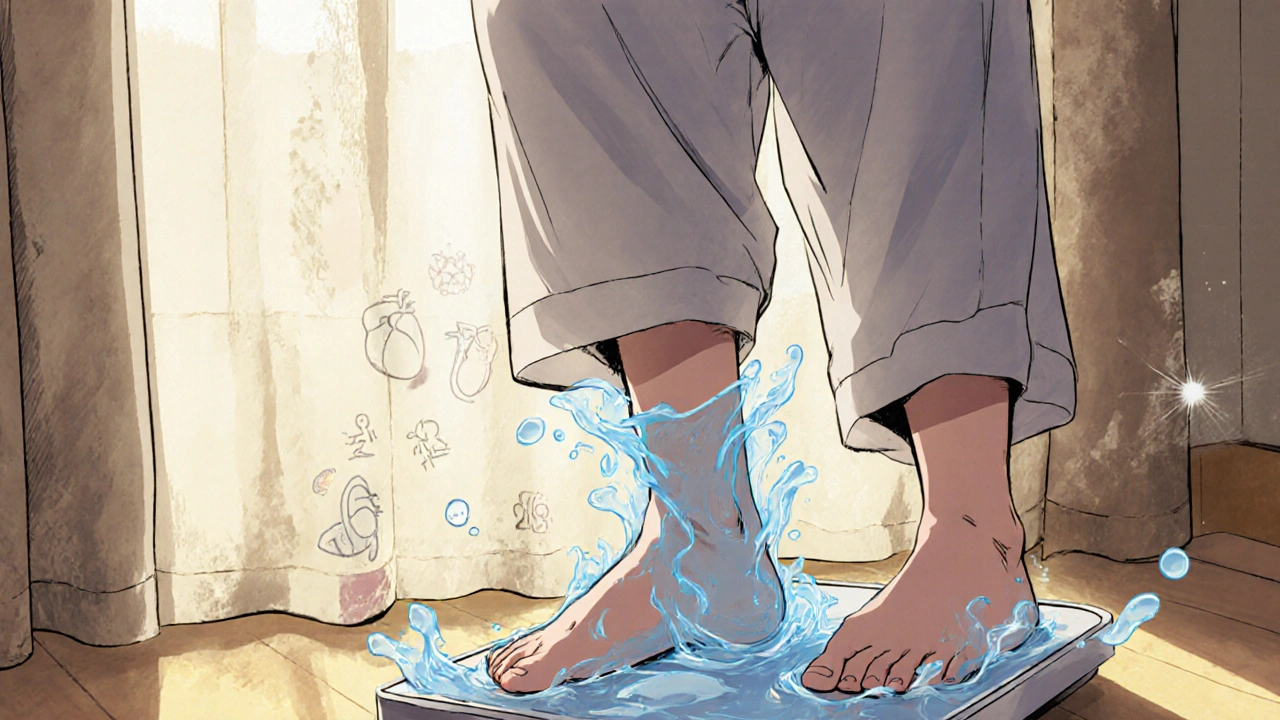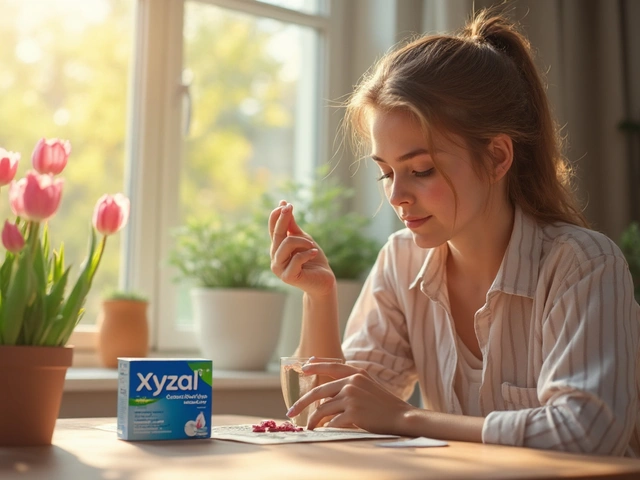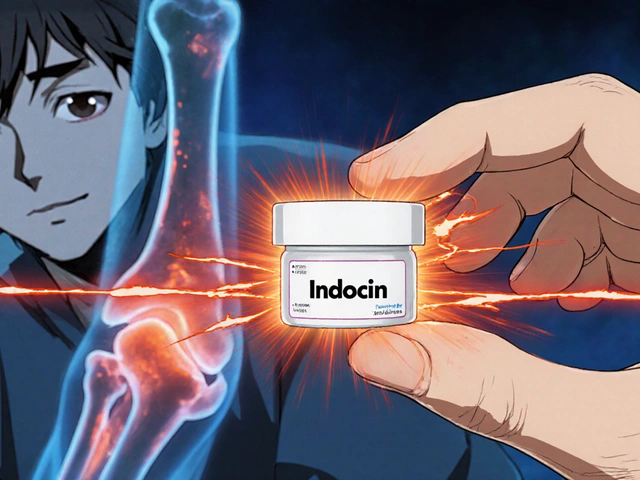TZD Fluid Retention Risk Calculator
TZDs like pioglitazone and rosiglitazone can cause fluid retention (edema) and weight gain. This calculator estimates your risk based on your dosage and other factors. Remember: 65-70% of TZD-related weight gain comes from fluid retention.
Why TZDs Cause Weight Gain and Swelling
Thiazolidinediones, or TZDs - like pioglitazone (Actos) and rosiglitazone (Avandia) - are powerful diabetes drugs that help your body use insulin more effectively. But they come with a trade-off: most people who take them gain weight and develop swelling, especially in the ankles and feet. This isn’t just a minor annoyance. For some, it can lead to serious heart problems.
The weight gain isn’t just from fat. About 65-70% of it comes from extra fluid stuck in your body. That’s why your shoes feel tighter, your ankles puff up, or the scale jumps 5 pounds in a week - even if you haven’t changed what you eat. This fluid retention happens because TZDs make your kidneys hold onto more sodium and water. They also make tiny blood vessels leakier, letting fluid escape into surrounding tissues.
It’s dose-dependent. Take 15 mg of pioglitazone? Edema risk is around 2%. Jump to 45 mg? It spikes to nearly 5%. And if you’re already on insulin? The risk jumps to 16%. That’s why doctors now start patients on the lowest possible dose and move up slowly - if at all.
Who Should Avoid TZDs Altogether
TZDs are not safe for everyone. If you have heart failure - especially NYHA Class III or IV - you should never take them. The FDA added a black box warning in 2007 for this exact reason. These drugs can turn mild fluid retention into life-threatening heart failure.
Even if you don’t have diagnosed heart failure, you need to be careful if you have:
- History of heart problems or past hospitalizations for heart failure
- Chronic kidney disease (especially stage 3 or worse)
- Older age (65+), since fluid balance becomes harder to manage
- Already taking insulin or other drugs that cause fluid retention
Doctors don’t prescribe TZDs as a first choice anymore. Metformin is safer, often helps with weight loss, and doesn’t cause swelling. GLP-1 agonists like semaglutide actually help you lose weight. SGLT2 inhibitors like empagliflozin reduce heart failure risk. So TZDs are now reserved for a small group: people with severe insulin resistance who haven’t responded to anything else - and who don’t have heart or kidney issues.
How to Spot Early Signs of Trouble
Most people don’t realize they’re developing edema until it’s obvious. By then, it might be too late. The key is catching it early.
Watch for these red flags:
- Swelling in your ankles, feet, or lower legs - especially if it’s new or getting worse
- Your rings or shoes suddenly feel tight
- Needing to loosen your belt or pants without eating more
- Shortness of breath when walking up stairs or lying flat
- Needing to prop your legs up to feel comfortable at night
Check your weight every morning, right after waking up and before eating or drinking. A gain of 2-3 kg (4-6 lbs) in a week is a warning sign. Don’t wait for swelling to appear - the weight gain comes first.
One study found that patients who tracked their weight daily cut their hospitalizations for heart failure by 34%. That’s not a small number. It’s life-changing.

Strategies to Reduce Swelling and Weight Gain
If you’re on a TZD and want to keep taking it, you can reduce these side effects - but you need to be proactive.
1. Lower the Dose
Many people are prescribed 30 or 45 mg of pioglitazone. But studies show that 15 mg daily still works well for blood sugar control - and cuts edema risk by more than half. Talk to your doctor about stepping down if you’re on a higher dose.
2. Combine With an SGLT2 Inhibitor
This is one of the most effective strategies. SGLT2 inhibitors like empagliflozin or dapagliflozin make your kidneys flush out sugar and salt - exactly the opposite of what TZDs do. In clinical trials, combining them reduced TZD-related edema by 45%. Plus, SGLT2 inhibitors help with weight loss, protect your heart, and lower your blood pressure. They’re a natural counterbalance.
3. Cut Back on Salt
When your kidneys are holding onto sodium because of TZDs, eating more salt makes it worse. Aim for less than 2,000 mg of sodium per day. That means:
- Avoid processed foods - soups, sauces, frozen meals, deli meats
- Don’t add salt at the table
- Use herbs, lemon, or vinegar instead of salt for flavor
- Read labels - even bread can have 300-400 mg per slice
A 2021 study showed that people who followed a low-sodium diet while on TZDs saw a 27% drop in swelling severity.
4. Use a Diuretic - But Choose Wisely
Some doctors prescribe water pills to help with swelling. But not all diuretics are equal. Loop diuretics (like furosemide) are strong and can cause electrolyte problems. Thiazide diuretics (like hydrochlorothiazide) are milder and often better for TZD-related fluid retention. They work on the same part of the kidney that TZDs affect. But never start a diuretic without medical supervision. They can drop your blood pressure too much or cause dehydration.
5. Elevate Your Legs and Move Regularly
When you sit or stand for long periods, gravity pulls fluid down into your legs. Simple habits help:
- Elevate your feet on a stool or pillow for 15-20 minutes a few times a day
- Walk for 10-15 minutes after meals - movement pushes fluid back up
- Wear compression socks if swelling is persistent
These don’t fix the root cause, but they reduce discomfort and prevent skin breakdown from chronic swelling.
6. Take TZDs in the Morning
There’s limited evidence, but some small studies suggest taking TZDs in the morning reduces nighttime fluid buildup. Your body naturally clears fluid during the day, so aligning the drug’s effect with your natural rhythm might help. It’s not a cure, but it’s low-risk and worth trying.
What to Do If Side Effects Are Too Much
If you’re gaining weight, feeling swollen, or getting short of breath - and lifestyle changes aren’t helping - it’s time to talk about switching. You don’t have to suffer through side effects to control your blood sugar.
Ask your doctor about:
- Switching to a GLP-1 agonist (like semaglutide or liraglutide) - these help with weight loss and heart protection
- Adding or switching to an SGLT2 inhibitor - proven to reduce hospitalizations for heart failure
- Using metformin if you’re not already - it’s safe, cheap, and often helps with insulin resistance
Over 80% of people who stopped TZDs did so because of weight gain or swelling. And most found better alternatives. Your blood sugar doesn’t have to be controlled at the cost of your comfort or health.

The Future: Are TZDs Still Worth It?
TZDs used to be prescribed to nearly 1 in 5 people with type 2 diabetes in the U.S. Now, that number is under 5%. Why? Because safer, more effective options exist.
Newer drugs don’t just lower blood sugar - they protect your heart, help you lose weight, and reduce the risk of kidney disease. TZDs don’t offer those benefits. Their main advantage - improving insulin sensitivity - can now be achieved without the fluid retention risk.
There’s hope on the horizon. Researchers are developing new drugs called SPPARMs - selective PPAR modulators - that keep the good effects of TZDs but avoid the swelling. One, saroglitazar, showed 60% less edema in trials. It’s approved in India and may reach the U.S. in the next few years.
For now, TZDs are a last-resort option. If you’re on one, know the risks. Monitor your weight. Watch for swelling. And don’t be afraid to ask for a better alternative.
When to Call Your Doctor
Don’t wait for symptoms to get worse. Call your doctor right away if you notice:
- Weight gain of more than 2 kg (4.5 lbs) in 3 days
- Swelling that doesn’t go down after resting or elevating your legs
- Difficulty breathing when lying flat
- Coughing up frothy or pink-tinged mucus
- Extreme fatigue or confusion
These could be signs of heart failure. Early action saves lives.







